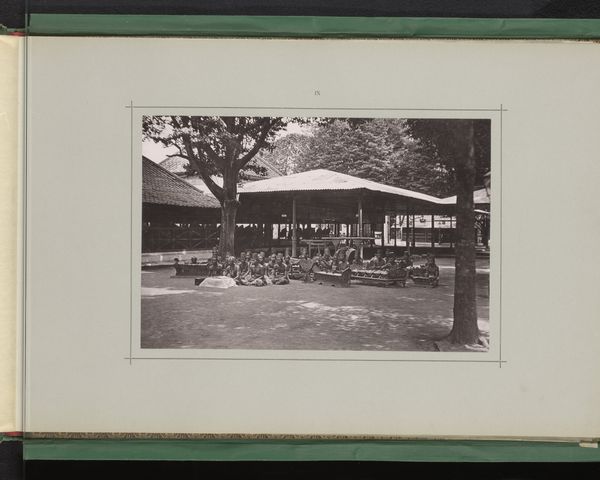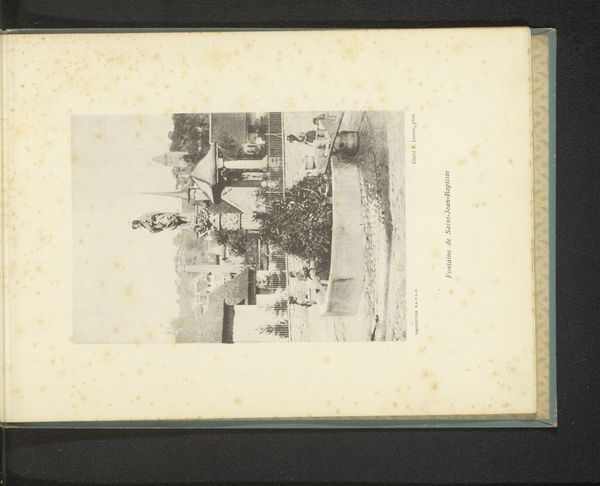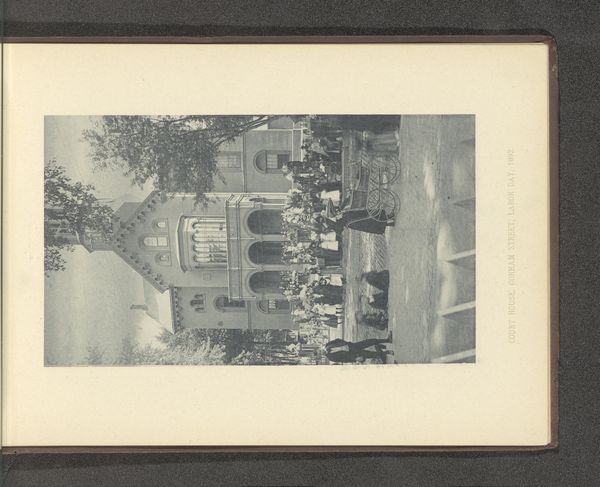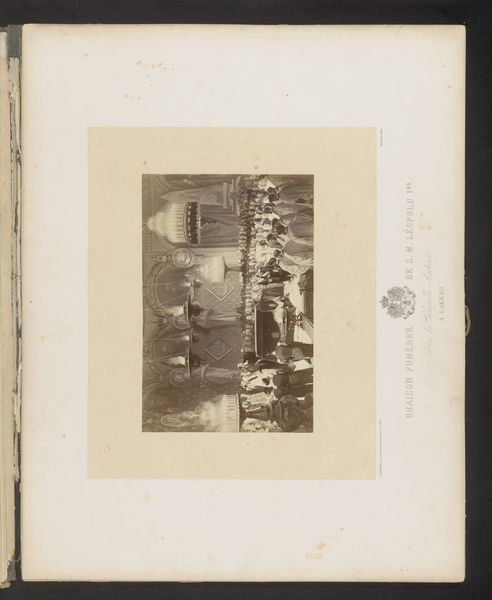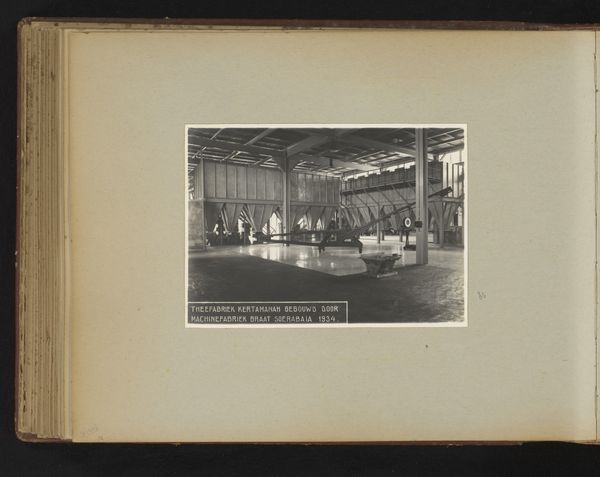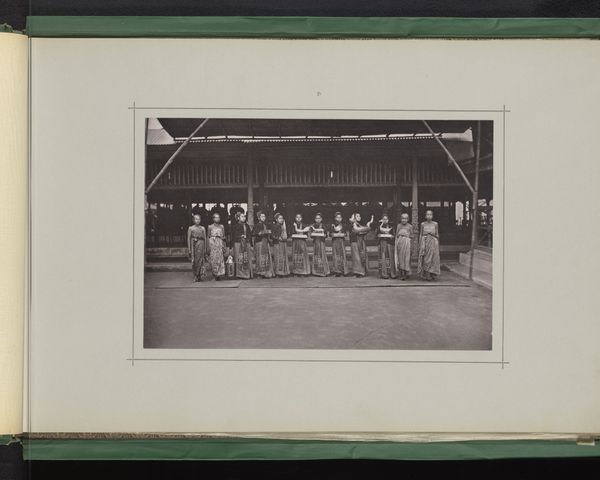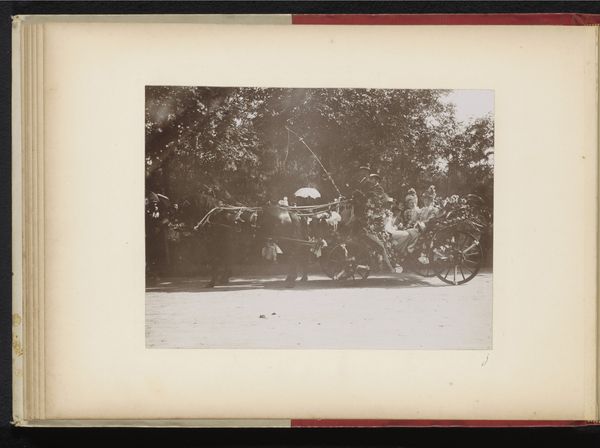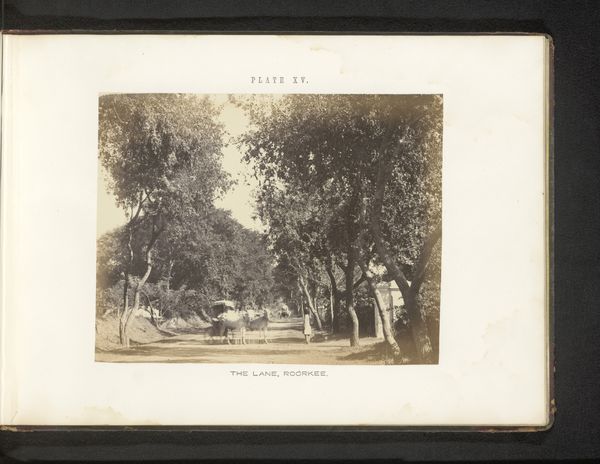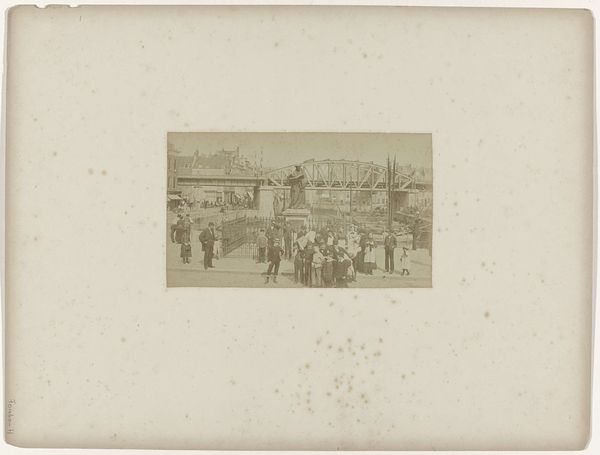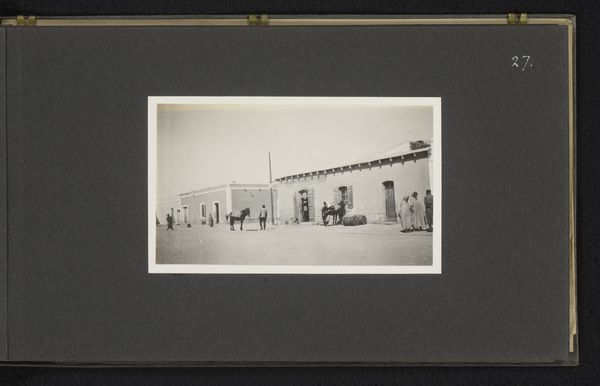
Toneelvoorstelling van een gevecht, in de Kraton Ngayogyakarta Hadiningrat in Jogyakarta, Indonesië before 1888
0:00
0:00
kassiancephas
Rijksmuseum
photography, gelatin-silver-print
#
asian-art
#
photography
#
gelatin-silver-print
Dimensions: height 181 mm, width 271 mm
Copyright: Rijks Museum: Open Domain
Curator: Here we have a gelatin-silver print titled, "Toneelvoorstelling van een gevecht, in de Kraton Ngayogyakarta Hadiningrat in Jogyakarta, Indonesië" created before 1888 by Kassian Céphas. Editor: It has a wonderfully staged quality, doesn't it? Everyone arranged just so, like a scene from a play frozen in time, all subdued tones, though one senses anticipation simmering underneath. Curator: Indeed, it depicts a performance, a staged battle, within the Kraton, the royal palace of Yogyakarta. Notice the elaborate costumes; each headdress, each weapon seems steeped in meaning. It's not merely a photograph but a document capturing a potent symbolic act. Editor: Absolutely. The crispness of the gelatin silver print highlights the textures, too - the rough cloth of the garments, the smoothness of the spears. It invites consideration of how this object was constructed. Were these images printed for widespread consumption, or for a more elite audience with connections to the court? Curator: Céphas himself was an interesting figure. He was one of the first native Indonesian photographers. This image shows how deeply imbricated visual culture could be, how photography could quickly become an instrument both to perpetuate and, possibly, subvert tradition. The genre is also very curious; what can a 'genre-scene' depict when documenting royal practices in an oriental setting? Editor: Precisely. And how would it have been seen at the time? What chemicals and materials did he have access to? Photography in that region would certainly have been different than its European counterpart, shaped by global trade. We're left wondering how the availability of certain resources played into shaping aesthetics. Curator: The photo acts as an ethnographic study while representing the performative aspects of power, which speaks volumes about the power structures inherent in royal life. The light also functions symbolically, almost like a blessing to those in battle. Editor: It’s fascinating to ponder how this piece fits into a global network of material exchange and creative practice during the late 19th century. It really urges a deeper examination of not just what's depicted, but how and why. Curator: Yes, and how visual vocabularies from different locations have mingled throughout history. Editor: An enduringly suggestive photograph that provides access into another world, not unlike theater.
Comments
No comments
Be the first to comment and join the conversation on the ultimate creative platform.

